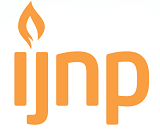Perception, Attitude, and Knowledge of Nursing Students towards Wet Cupping Therapy (Hijamah)
Abstract
Background: Complementary and Alternative Medicine (CAM) is a part of the health system that is well known and useful worldwide. One of the therapies used by many people is wet cupping therapy (hijamah). Nowadays, wet cupping therapy (hijamah) is taught in nursing and medical school.
Objective: The study investigates the perception, attitude, and knowledge of nursing students toward wet cupping therapy (hijamah).
Method: This study was quantitative research that uses descriptive research design and cross-sectional approaches. The sampling technique used was purposive sampling with 85 respondents. The data were collected using questionnaires and analyzed with bivariate analysis.
Result: The result showed that the perceptions of the respondents were mostly in the average category, with the best perception of respondents is in the benefit component (76.5%). Respondents have good view of cupping therapy as is useful as a form treatment, and is more practical and affordable. The respondents' attitudes and knowledge were in the average category, which was 58.8% and 68.2%. This study showed that most respondents already understand that cupping (hijamah) is a treatment with contraindications to specific health conditions. Respondents also could show the basic scientific concepts of cupping and hadiths that explained cupping. However, some respondents still think that cupping (hijamah) can be applied for all ages.
Conclusion: In conclusion, respondents' perceptions, attitudes, and knowledge toward wet cupping therapy (hijamah) were still insufficient in some aspects.
Keywords
Full Text:
PDFReferences
Al-Balawi, A. M., Almutairi, A. H., Alawad, A. O., & Merghani, T. H. (2016). Public perceptions of cupping therapy in Tabuk city, Saudi Arabia. International Journal of Medical Science and Public Health, 5(03), 529. doi: 10.5455/ijmsph.2016.25102015150
Al-Bedah, A. M. N., Elsubai, I. S., Qureshi, N. A., Aboushanab, T. S., Ali, G. I. M., El-Olemy, A. T., . . . Alqaed, M. S. (2019). The medical perspective of cupping therapy: Effects and mechanisms of action. Journal of traditional and complementary medicine, 9(2), 90-97 doi:10.1016/j.jtcme.2018.03.003
Al-Tabakha, M. M., Sameer, F. T., Saeed, M. H., Batran, R. M., Abouhegazy, N. T., & Farajallah, A. A. (2018). Evaluation of bloodletting cupping therapy in the management of hypertension. Journal of pharmacy & bioallied sciences, 10(1), 1. doi: 10.4103/jpbs.JPBS_242_17
Al-Yousef, H. M., Wajid, S., & Sales, I. (2018). Knowledge, attitudes, and perceptions of cupping therapy (CT) in Saudi Arabia-a cross-sectional survey among the Saudi population. doi: 10.4066/biomedicalresearch.29-18-1015
Al Mansour, M. A., Mohamed, E. Y., Abdalla, S. M., Medani, K. A., Mahmoud, W. S., & Meraj, S. A. (2015). Satisfaction, self-use and perception of medical students in Majmaah University, Kingdom of Saudi Arabia, towards complementary and alternative medicine. Journal of Taibah University Medical Sciences, 10(1), 74-78. doi:10.1016/j.jtumed.2015.01.009
Alghadir, A. H., Al-Yousef, H. M., Al-Hussany, F., Hasaneen, A., & Iqbal, Z. A. (2016). Beliefs and attitudes of paramedical college staff towards complementary and alternate medicine. African Journal of Traditional, Complementary and Alternative Medicines, 13(5), 170-177 doi:10.21010/ajtcam.v13i5.22
Allafi, A. R., & Al-Haifi, A. R. (2020). The effect of Hijamah on different health parameters. PROGRESS IN NUTRITION, 22(2), 411-414. doi:10.23751/pn.v22i2.8121
Arslan, M., Yeşilçam, N., Aydin, D., Yüksel, R., & Dane, Ş. (2014). Wet cupping therapy restores sympathovagal imbalances in cardiac rhythm. The Journal of Alternative and Complementary Medicine, 20(4), 318-321 doi:10.1089/acm.2013.0291
Damayanti, S., Muharini, F., & Gunawan, B. (2012). Profil Penggunaan Terapi Bekam di Kabupaten/Kota Bandung Ditinjau Dari Aspek Demografi, Riwayat Penyakit, dan Profil Hematologi. Acta Pharmaceutica Indonesia, 37(3), 102-109
El Sayed, S. M., Mahmoud, H. S., & Nabo, M. M. H. (2013). Methods of wet cupping therapy (Al-Hijamah): in light of modern medicine and prophetic medicine. Alternative & Integrative Medicine, 1-16
Elolemy, A. T., & AlBedah, A. M. N. (2012). Public knowledge, attitude and practice of complementary and alternative medicine in Riyadh region, Saudi Arabia. Oman medical journal, 27(1), 20. doi:10.5001/omj.2012.04
Hooshangi, M., Mohammadi, S., Alizadeh, J., Mohammadi, M., Bolghanabadi, A., Rahmani, M., . . . Mohammadzadeh, F. (2017). Knowledge, attitude and practice of students of Gonabad University of Medical Sciences toward famous methods of complementary and alternative medicine. Traditional and Integrative Medicine, 2(2), 67-73. doi:10.1177/1744987120925852
Kamaluddin, R. (2010). Pertimbangan dan alasan pasien hipertensi menjalani terapi alternatif komplementer bekam di kabupaten banyumas. Jurnal Keperawatan Soedirman, 5(2), 95-104
Khorasgani, S. R., & Moghtadaie, L. (2014). Investigating Knowledge and Attitude of Nursing Students Towards Iranian Traditional Medicine: Case Study: Universities of Tehran in 2012-2013. Global journal of health science, 6(6), 168. doi: 10.5539/gjhs.v6n6p168
NCCIH. (2018). complementary-alternative-or-integrative-health-whats-in-a-name. Retrieved from https://www.nccih.nih.gov/health/complementary-alternative-or-integrative-health-whats-in-a-name.
Paramitasari, R., & Alfian, I. N. (2012). Hubungan antara kematangan emosi dengan kecenderungan memaafkan pada remaja akhir. Jurnal Psikologi Pendidikan dan Perkembangan, 1(2), 1-7.
Qureshi, N. A., Ali, G. I., Abushanab, T. S., El-Olemy, A. T., Alqaed, M. S., El-Subai, I. S., & Al-Bedah, A. M. N. (2017). History of cupping (Hijama): a narrative review of literature. Journal of integrative medicine, 15(3), 172-181. doi:10.1016/S2095-4964(17)60339-X
Razzaq, T., Khan, M. A., & Zehra, N. (2013). Public awareness towards cupping therapy in Karachi. Pakistan Journal of medicine and dentistry, 2(04), 18-23.
Sridhar, S. B., Shariff, A., Al Halabi, N., Sarmini, R., & Harb, L. A. (2017). Assessment of perception, experience, and information-seeking behavior of the public of Ras Al-Khaimah, United Arab Emirates, toward usage and safety of complementary and alternative medicine. Journal of pharmacy & bioallied sciences, 9(1), 48. doi: 10.4103/jpbs.JPBS_337_16
Supardi, S. (2010). Penggunaan obat tradisional dalam upaya pengobatan sendiri di Indonesia (Analisis Data Susenas Tahun 2007). Buletin Penelitian Kesehatan, 38(2).
Syahruramdhani, S., Agustiningsih, D., & Sofro, Z. M. (2016). The Influence of Dry Cupping toward Heart Rate Variability (HRV) in Male Obesity adolescence. Mutiara Medika: Jurnal Kedokteran dan Kesehatan, 16(2), 71-75.
Syahruramdhani, S., Chiu, T.-I., & Kartina, I. (2017). The Effects of Cupping Therapy on Blood Lipid Profiles: A Systematic Review and Meta Analysis.
WHO. (2019). WHO global report on traditional and complementary medicine 2019: World Health Organization.
WHO. (2020). Adolescent health in the South-East Asia Region. Retrieved from https://www.who.int/southeastasia/health-topics/adolescent-health#:~:text=WHO%20defines%20'Adolescents'%20as%20individuals,age%20range%2010%2D24%20years"
DOI: https://doi.org/10.18196/ijnp.v4i2.10269
Refbacks
- There are currently no refbacks.

This work is licensed under a Creative Commons Attribution 4.0 International License.
IJNP (Indonesian Journal of Nursing Practices) are indexed by:
Office:
School of Nursing, Faculty of Medicine and Health Science, Universitas Muhammadiyah YogyakartaSiti Walidah Building F3, 4th floor.
JL. Brawijaya, Tamantirto, Kasihan, Bantul, Yogyakarta 55183
Email: IJNP@umy.ac.id
Web: http://journal.umy.ac.id/index.php/ijnp

Indonesian Journal of Nursing Practice is licensed under an Attribution 4.0 International (CC BY 4.0) license.




















.png)
